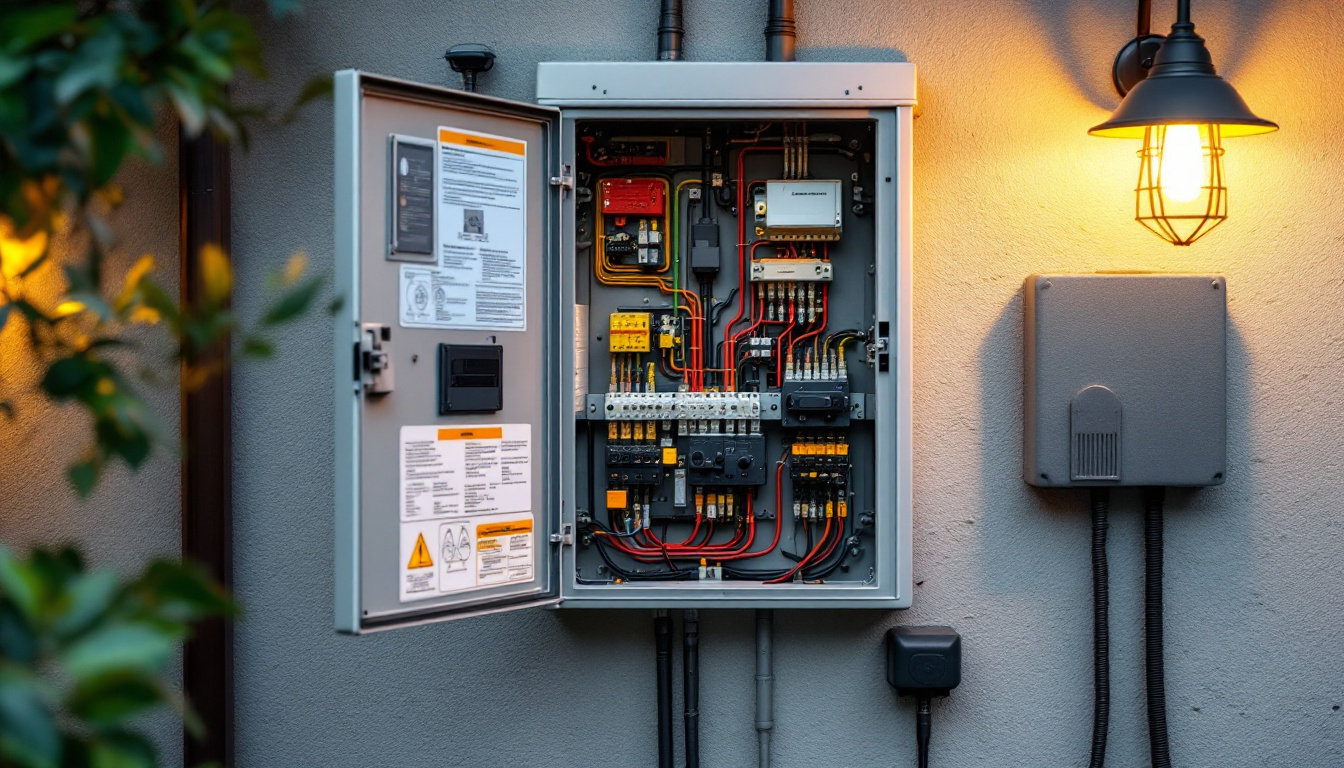
In the competitive landscape of lighting contracting, managing costs while maintaining quality is crucial. One of the most significant areas where expenses can accumulate is in the procurement and installation of power cables. Understanding how to optimize these costs can lead to substantial savings without compromising the integrity of the lighting projects. This article delves into effective strategies that lighting contractors can employ to reduce expenses associated with power cables.
Before diving into cost-saving strategies, it is essential to understand the specifications of power cables. Different projects will require different types of cables based on factors such as voltage, current capacity, and environmental conditions. Familiarity with these specifications can help contractors make informed purchasing decisions. Additionally, understanding the regulatory standards and safety requirements associated with each type of cable is crucial. Compliance with local codes can prevent costly fines and ensure the safety of installations, making it imperative for contractors to stay updated on any changes in legislation.
Power cables come in various types, including low voltage, medium voltage, and high voltage cables. Each type serves a specific purpose and is designed to handle different electrical loads. Low voltage cables are commonly used in residential and commercial lighting, while medium and high voltage cables are more suited for industrial applications. Understanding the specific requirements of each project can prevent over-specification and unnecessary expenses. Furthermore, the choice of cable insulation—such as PVC, XLPE, or rubber—can also influence performance and longevity. Selecting the right insulation material is essential for ensuring that the cables can withstand environmental factors like moisture, temperature fluctuations, and exposure to chemicals, thereby enhancing their durability and reliability.
The materials used in power cables can significantly impact their cost. Copper and aluminum are the most common materials, with copper being more conductive and, consequently, more expensive. However, aluminum cables can offer a cost-effective alternative for certain applications. Evaluating the project’s requirements and considering the use of aluminum where appropriate can lead to substantial savings. Additionally, the choice of material can affect the overall weight and flexibility of the cables, which is particularly important in applications where installation space is limited or where cables need to be routed through tight bends. Moreover, advancements in composite materials are also emerging, providing innovative solutions that combine the benefits of both copper and aluminum, potentially offering enhanced performance while reducing costs.
Building strong relationships with suppliers can be a game changer for lighting contractors. By leveraging these relationships, contractors can negotiate better pricing and terms, ultimately reducing costs. A solid partnership can also foster trust, which is essential when it comes to managing project timelines and ensuring quality materials are consistently supplied.
Purchasing power cables in bulk can lead to significant discounts. Many suppliers offer reduced rates for large orders, which can result in lower per-unit costs. Contractors should assess their project timelines and requirements to determine if bulk purchasing is feasible. Planning ahead and ordering materials in advance can help secure the best deals. Furthermore, bulk purchasing not only allows contractors to save money but also ensures they have a steady supply of materials on hand, minimizing delays caused by unexpected shortages.
Establishing long-term partnerships with suppliers can yield additional benefits beyond just pricing. Reliable suppliers may provide insights into upcoming sales, new products, or alternative materials that could save costs. Additionally, strong relationships can lead to better service, faster delivery times, and priority access to stock during high-demand periods. These partnerships can also facilitate open communication, allowing contractors to express their specific needs and receive tailored solutions that enhance project efficiency. This collaborative approach often results in suppliers being more willing to accommodate special requests or adjustments, further strengthening the contractor’s ability to meet client expectations.
Moreover, long-term supplier relationships can lead to joint marketing opportunities, where both parties can benefit from shared promotions or events. This collaboration not only enhances visibility in the market but also reinforces the contractor’s reputation as a reliable partner in the industry. By working closely with suppliers, contractors can stay ahead of trends and innovations in lighting technology, ensuring they offer the most up-to-date solutions to their clients. Such proactive engagement can be a key differentiator in a competitive landscape, ultimately leading to increased customer satisfaction and loyalty.
Cost savings can also be realized through efficient installation practices. The way power cables are installed can impact labor costs and project timelines, making it essential to adopt best practices. By focusing on the overall workflow and logistics of installation, companies can significantly enhance their operational efficiency, leading to both time and monetary savings. This not only benefits the bottom line but also contributes to a more sustainable approach to project management.
Investing in training for installation teams can lead to improved efficiency and reduced errors. Well-trained electricians can complete installations more quickly and accurately, minimizing the risk of costly mistakes. Regular training sessions and workshops can keep teams updated on the latest techniques and technologies in cable installation. Furthermore, fostering a culture of continuous learning encourages team members to share their insights and experiences, which can lead to innovative solutions and improved practices across the board. This collaborative environment not only boosts morale but also enhances the overall quality of work.
Incorporating technology into the installation process can streamline operations and reduce labor costs. For instance, using cable management software can help in planning layouts and optimizing cable runs, which can save time during installation. Additionally, employing tools such as cable pullers can reduce physical strain on workers and speed up the installation process. Beyond these tools, the integration of augmented reality (AR) and virtual reality (VR) in training and planning phases can provide installation teams with immersive experiences, allowing them to visualize complex installations and troubleshoot potential issues before they arise. This proactive approach not only enhances the skill set of the workforce but also ensures that installations are executed with precision and confidence, ultimately leading to higher customer satisfaction and project success.
Selecting the appropriate cable for each project is vital for both performance and cost-effectiveness. Using the right cable can prevent issues that may lead to costly repairs or replacements down the line.
Before purchasing cables, contractors should conduct a thorough assessment of the project’s specific needs. Factors such as load requirements, distance, and environmental conditions should all be considered. By accurately determining the necessary specifications, contractors can avoid over-purchasing or selecting inappropriate cables that could lead to performance issues.
Investing in slightly more expensive cables that offer higher capacity or better durability can be a cost-saving strategy in the long run. Future-proofing solutions may prevent the need for upgrades or replacements as project demands evolve. This foresight can save both time and money, ensuring that the installation remains efficient and effective over its lifespan.
Implementing a regular maintenance and inspection schedule can help identify potential issues before they escalate into costly repairs. By proactively addressing problems, contractors can save money and ensure the longevity of their installations.
Creating a routine maintenance schedule for installed power cables can help in detecting wear and tear early. Regular inspections can identify issues such as insulation damage, corrosion, or loose connections, which can lead to significant problems if left unaddressed. By investing time in maintenance, contractors can extend the lifespan of their installations and avoid unexpected costs.
Keeping detailed records of inspections and maintenance activities can provide valuable insights into the performance of power cables over time. This documentation can help contractors identify patterns or recurring issues, allowing for more informed decision-making regarding future projects and installations. Additionally, having thorough records can be beneficial for warranty claims or insurance purposes.
Many regions offer incentives for energy-efficient installations, which can include rebates or tax credits for using specific types of power cables. Lighting contractors should stay informed about available programs that can help offset costs.
Contractors should research local, state, and federal programs that promote energy efficiency. These programs often provide financial incentives for using energy-efficient materials, including power cables. Staying updated on these opportunities can lead to significant savings and enhance the overall appeal of projects to clients.
Educating clients about the benefits of energy-efficient installations can also help in securing projects. By highlighting potential savings on energy bills and the environmental impact of using efficient materials, contractors can position themselves as knowledgeable professionals who prioritize sustainability. This approach may lead to increased client trust and more referrals.
While it may be tempting to opt for the cheapest available options, investing in quality power cables can lead to long-term savings. High-quality cables may have a higher upfront cost but can provide better performance and durability.
Cheap power cables may save money initially but can lead to higher costs over time due to failures, repairs, and replacements. Inferior materials are more susceptible to damage and may not meet safety standards, putting projects at risk. By investing in quality cables, contractors can ensure reliability and safety, ultimately saving money in the long run.
When choosing power cables, it is essential to consider the warranty and support offered by manufacturers. A good warranty can provide peace of mind and protect against defects or failures. Additionally, manufacturers that offer robust support can assist contractors in troubleshooting issues, further reducing potential costs associated with downtime or repairs.
Cost management is a critical aspect of success for lighting contractors. By implementing the strategies outlined above, contractors can optimize their approach to power cables, leading to significant savings without sacrificing quality. From understanding specifications to building strong supplier relationships and investing in quality materials, every decision can impact the bottom line. By prioritizing efficiency, quality, and proactive maintenance, lighting contractors can ensure their projects are both cost-effective and reliable.
Ready to apply these cost-saving strategies to your next lighting project? Look no further than LumenWholesale for all your power cable needs. Our commitment to providing spec-grade lighting products at wholesale prices means you can trust in the quality and performance of every purchase. With free shipping on bulk orders, you’ll enjoy the best value without any hidden costs. Elevate your lighting projects with the assurance of top-tier materials and customer-focused service. Wholesale Lighting at the Best Value is just a click away. Partner with LumenWholesale today and experience the difference quality and affordability can make.

Discover how to transform your workspace with LED lighting solutions designed for maximum efficiency.

Unlock the secrets of exterior electrical boxes with this essential guide for lighting contractors.

Discover essential insights and tips for lighting contractors in our comprehensive guide on Light Can.

Discover how tape lights can transform your lighting projects from ordinary to extraordinary.